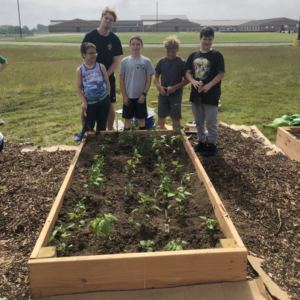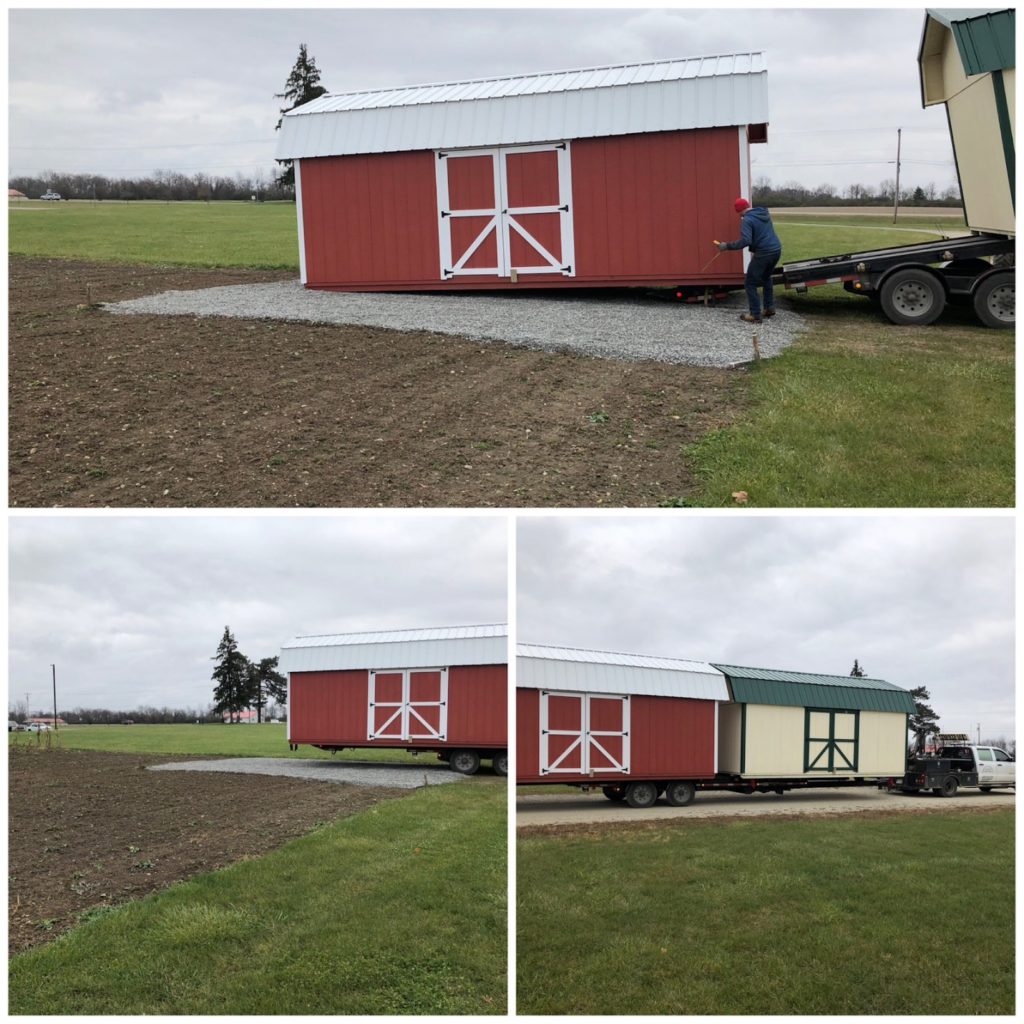Through April 1, eligible Ohio farmers can nominate their local public school district to apply for $15,000 STEM grants through the America’s Farmers Grow Rural Education program, sponsored by the Bayer Fund. Once nominated, school districts can submit applications to compete for the grants to help pay for projects that enhance their STEM curriculum.
Since the grant is more involved than just submitting an application, this post is a double feature. Jeanne Gogolski is one of the state’s top experts on education, including how to integrate agriculture into the classroom. She’ll detail how the grant application works.
Next, Chad Lensman will detail the successful application that his school district, Graham Local Schools, placed to win this grant. (Skip to Chad’s interview here)
Jeanne Gogolski at EducationProjects.org explains the America’s Farmers Grow Rural Education grant
To find out details about the grant program, we contacted Jeanne Gogolski, founder and CEO of EducationProjects.org, who also filled us in on her organization:
Q: Tell us about EducationProjects.org and your role there.
A: Our organization aims to “connect industry to the classroom.” For more than 20 years, EducationProjects.org has been empowering teachers to inspire students. Industry relies on our team of educators to write curriculum and manage education programs connecting the workplace to the classroom.
I am the organization’s founder and CEO. I am responsible for client relationships spanning more than 20 years. As an educator and former school counselor, I straddle both the classroom and industry. As the organization’s chief educator, I lead the specialists and oversee the core work product. My career has been dedicated to teaching, career development, and service learning.
Q: How did EducationProjects.org become involved with the Ohio Soybean Council, and what have you done for the council? What is GrowNextGen, and what is its mission?
A: Here is the “story” we have about our partnership with the Ohio Soybean Council. Our goal is to connect mainstream science teachers (life science, biology, environmental science, chemistry) to modern agriculture. There is a 30% talent gap in agriculture nationwide. Because only 4% of students take agriculture and 96% take biology, it is obvious that to fill the STEM talent gap in agriculture, we must reach out to a broader audience.
Q: Now tell us about the America’s Farmers Grow Rural Education program – what is its aim, and how does it work to accomplish it?
A: Bayer – most people think of baby aspirin – is a leader in cutting-edge science in agriculture. The company is aware of the need to reach mainstream STEM students and inspire them to consider agriculture science jobs in the future. Bayer also is committed to helping students in rural areas – the places where agriculture has a presence and visibility.
The grant program sponsored by America’s Farmers Grow Rural Education allows farmers to nominate their local public school districts to submit applications for $15,000 grants to support their efforts in STEM education. Bayer has given out more than $53 million to schools and nonprofits since 2010.
Q: Can you give us details about the process?
A: A farmer nominates a school (with the school’s knowledge), and Bayer contacts the school district to provide it with instructions on how to fill out a grant application. Eligible farmers must submit a nomination between Jan. 1 and April 1, 2020. The school must respond between Jan. 1 and April 15, 2020.
The farmer does not have to be a soybean farmer. If a school is interested in applying, we can find a farmer to nominate the school. (But of course, we work with soybean farmers, so they will probably be interested in how a school might incorporate GrowNextGen in some way!)
See these rules on eligibility:
- Eligible farmer– An eligible farmer must be 21 years of age or older at the time of nomination, and be actively engaged in farming a minimum of 250 acres. A farmer is “actively engaged in farming” if he or she performs the work on the farm, or hires and actively manages others who do so.
- Eligible school district – A school district must be considered a public school district by the National Center for Education Statistics (NCES). Public charter schools are eligible if they are considered public by NCES.
You can see Ohio’s schools that have won this award: https://www.americasfarmers.com/grow-rural-education/2019-winners/
Q: Is there anything else you would like to tell our readers about this grant program? Where can they find more information about it?
A: Check out this site for more information: https://www.americasfarmers.com/grow-rural-education/
We are happy to talk with educators who are interested in applying for this grant! We have curriculum, resources, PD and plenty of ideas. Please contact the head of our education department, Jane Hunt, [email protected], if you are interested in brainstorming ideas or getting connected to this grant. We have farmers who can help!
Plus, here are three farmer-inspired websites that teachers can visit for ideas:
Chad Lensman at Graham Local Schools on winning the America’s Farmers Grow Rural Education grant
And, following her interview, we have information from Chad Lensman, the director of teaching and learning for Graham Local Schools, who applied for and won an America’s Farmers Grow Rural Education grant for his district. The grant money was used to help create “Falcon Farms,” a hands-on, “farm-to-table” outdoor learning experience for Graham Local students.
Q: Tell us about your school district.
 A: Graham Local Schools is a rural district located in Champaign County in western Ohio. The district has an enrollment of 1,800 PreK-12 students who are spread over PreK-5, 6-8 and 9-12 buildings. Graham Local Schools is proud of the STEAM culture and programming that is offered across the district. Graham Elementary and Graham Middle schools have been awarded the prestigious STEM Designation from the Ohio Department of Education, making Graham one of just a few districts in the state having multiple schools with the STEM designation.
A: Graham Local Schools is a rural district located in Champaign County in western Ohio. The district has an enrollment of 1,800 PreK-12 students who are spread over PreK-5, 6-8 and 9-12 buildings. Graham Local Schools is proud of the STEAM culture and programming that is offered across the district. Graham Elementary and Graham Middle schools have been awarded the prestigious STEM Designation from the Ohio Department of Education, making Graham one of just a few districts in the state having multiple schools with the STEM designation.
Graham Local has a hard-working and innovative staff that provides students with hands-on learning opportunities that lead them to one of the three E’s – Enrollment, Enlistment or Employment – by the time they graduate.
Q: How did you find out about the America’s Farmers Grow Rural Education program and its grants?
A: The district’s administration discovered the America’s Farmers Grow Rural Education grant opportunity and quickly made the connection on how the program could positively impact the district and the local community, which has a rich agricultural tradition.
Q: How did you locate a farmer to nominate your district? Has the farmer participated in any other district events/programs?
 A: Graham Local Schools is very fortunate to have many farmers in the area that support the district, but we only had to turn to our Board of Education for the nomination. Steve Prince is a successful corn and soybean farmer who also sits on the Graham Local school board and is a member of our district STEAM Advisory Board. He had seen the outdoor, hands-on learning opportunities that the district was working on to provide to all students.
A: Graham Local Schools is very fortunate to have many farmers in the area that support the district, but we only had to turn to our Board of Education for the nomination. Steve Prince is a successful corn and soybean farmer who also sits on the Graham Local school board and is a member of our district STEAM Advisory Board. He had seen the outdoor, hands-on learning opportunities that the district was working on to provide to all students.
Q: What was the application process like for you? What did you emphasize in your application, and why do you think you won?
A: The application process aligned with our current district focus. The creation of “Falcon Farms” was already going to be the plan. The application process helped to align the project’s focus and to create a budget. The plan was always to be a self-sustaining, real-world learning opportunity through farm-to-table and our local farmer’s market, which is ultimately why we feel that we were selected for the grant.
Q: How much money did you win, and what is the money being used for?
A: “Falcon Farms” was awarded $25,000 to help support and expand outdoor education at our schools. Materials were purchased to make and care for a specialty crop area, raised garden beds, beehives and chicken coops. All of these learning opportunities would not have been possible if it wasn’t for the grant.
 Q: Will you apply again for the grant? If so, what is your target project or projects?
Q: Will you apply again for the grant? If so, what is your target project or projects?
A: Absolutely! Graham Local Schools was fortunate to receive the grant previously, and it went directly to benefit the students and the staff. The goal would be to continue to provide new and innovative learning opportunities that place a focus on outdoor learning and agriculture.
Q: What advice would you give to other educators who might want to apply for this grant?
A: Connect with your community. The major factor in receiving the grant was that partnerships had been established, and there were connections that were being made within our local community. These are both things that can happen at any school, located in any community. Know who you are, where you come from and make connections!
Q: Is there anything else you would like to share about the grant?
A: Dream big! There have been many learning opportunities that Graham Local Schools students have experienced because of the grant. It all started with a dream!
